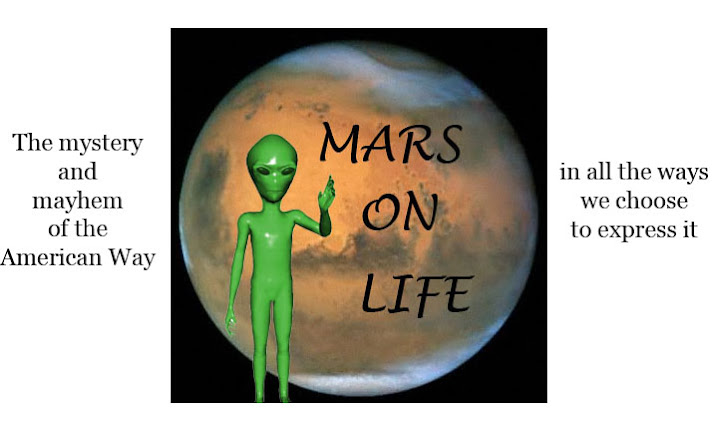Lee Bontecou began to sculpt during a period of social, political, and philosophical flux that occurred with America's transition from the Atomic into the Space Age. In the late 1950s, America openly flexed its muscles on the worldwide stage as it raced towards space and nuclear domination. At the same time, the country was riding a pre-fab economic high that began at the end of World War Two. We were moving into the future not just confidently, but aggressively. Art--primarily in the field of design--reflected this futurity by streamlining buildings and their decor into disp assionate utilitarianism.
assionate utilitarianism.
To move forward, to build for speed and efficiency, artists and architects had to do away with detail. Progress would only be hindered by sentimentalism and clutter. Half a century earlier, the Victorians had thrived on excessive and often incomprehensible feature. As the country embraced rapid technological advancement, the old forms of decoration became symbols of intellective calcification.
We were not a country without a need for comfort, however. Heaviness represented solidity, but it also represented outmoded intellectual patterns. America had always felt most comfortable in the past, even as it marched towards tomorrow. The new design aesthetic created an emblematic visual rift between traditional and modern values.
Although Scandinavia pioneered functional design, America quickly adopted it even as it refused Scandinavia's political neutrality and moderation. It was this perverted humanism that Lee Bontecou investigated through works that explored not just the scientific questions engendered in the race for space but also in America's escalating political interventionism.
An allegorical black hole was reiterated in many Bontecou sculptures of this period. The hole could be said to simultaneously represent the natural and the absurd. The artist was intrigued by both the boundlessness of space and the atrocities of man. From this perspective, the circle became a locus of reflection into which one could peer infinitely and without definite conclusion.
The sculptures' provocative abstractions appealed so much to Rick Owens that he happily cited them as the entire premise behind his Fall 2008 collection. Owens has been routinely pegged as a sartorial crypt keeper, someone who in the past could not climb out of the grave long enough to pull together a wholly wearable collection. His work has largely been seen as a collection of variables, some of them impossible. What had been carelessly labeled as "goth" is starting to seem more and more like anti-bourgeois. Owens is beyond chic, and as his body of work expands he appears to be making a statement about fashion's fallacy of detail. Detail exists on clothing for the bourgeois; Owens designs for those who must outlin e and master new worlds.
e and master new worlds.
Through the use of visually primitive textures, Owens' Fall 2008 collection echoes Bontecou's use of common materials and objets trouvés as much as it does her actual geometry. Pelts and leather become carapaces and vestigial appendages from which the survivors of the new Ice Age can emerge. These modern-day Sabinas move past disaster and cataclysm blinded by their own hair, as if they haven't yet reacquired sight.
What might appear to be inexplicable detail--useless wings, unfurling leg warmers--is instead justifiable as a stage of evolution.
Bontecou was a superb inspiration for Owens, because her work demands a re-examination of our relationship to the past and the ideological divides between former assumptions and present-day realities. Certain designers ply these same seas with cynicism (and in goth this is often an implied state), but the Bontecou references remove cynicism and replace it with questions of control. Who will control the future? Who can survive today?
If it sounds as if Owens is treating fashion as a political vehicle, this is because he is currently at war with cirrhotic features that have no basis in truth. What Owens does best is to create fashion that is a pictorial representation of fighting back, even as it is clear that we will always have to return to the starting point.
Images: Style.com
Tuesday, February 26, 2008
Paris Fashion Week: Not in the Details
Subscribe to:
Post Comments (Atom)









9 comments:
I too was going to post about the work of Bontecou and the Owens collection... it was a good synergy even if Owens admits that he did directly lift a lot from Bontecou's work...
Please, please, please tell me you're going to do something on Christian Dior - I seriously need help understanding JG's collection. ( see my blog for details, this is not a ploy to get you there, rather a quest for enlightenment)
Suzanna, I love your take. I just wrote a post on the Owens collection (for tomorrow) which is so facile, by comparison to this, that I'm inclined to scrap it (smartening it up would be too challenging!). The perspective I gain from your blog...
SB, I don't think the inspiration was terribly literal; it didn't appear as if the models were sporting wall hangings or other Bontecou pieces. You have to look at the sculptures to see how the idea worked--it's obvious in some places and not in others.
Bronwyn, haven't looked at the Dior yet, but will!
k. line, facile is good! You know me, any time I can make cultural commentary and throw in some theatrical allusion I will.
Great piece on the Bontecou/Owens connection! I'm with k.line: I thought about posting on this too, but you've said it better.
what a beautiful post....
i've been thinking a lot about this subject, and modernist design has clean lines not only for mass productive purposes, but also because the victorian age was riddled with filth and disease caused by overpopulation in the cities and pollution from the factories.
simple design also evolved out of necessity, surfaces that are easier to keep clean help reduce the spread of germs. also the aesthetic became a symbol for the modern age, that we could all have healthy lives in our clean, well organized boxes.
it's this kind of thinking that makes me wonder how design of the 21st century is going to tackle the problems we face today.
To me, Owens has always challenged Old Ideas. In fact, his work seems to be more about Ideas than anything else. The process by which he synthesizes all his inspirations and influences into his work is something that always confounds and amazes me. He is outstanding.
I just love him. He has got to be one of my top five favorite designers working today. If only coutouriers would take a queue from him...His craft is magnificent.
Hmm yes I like to hear you thoughts on DIOR...this was another brilliant post.
Post a Comment